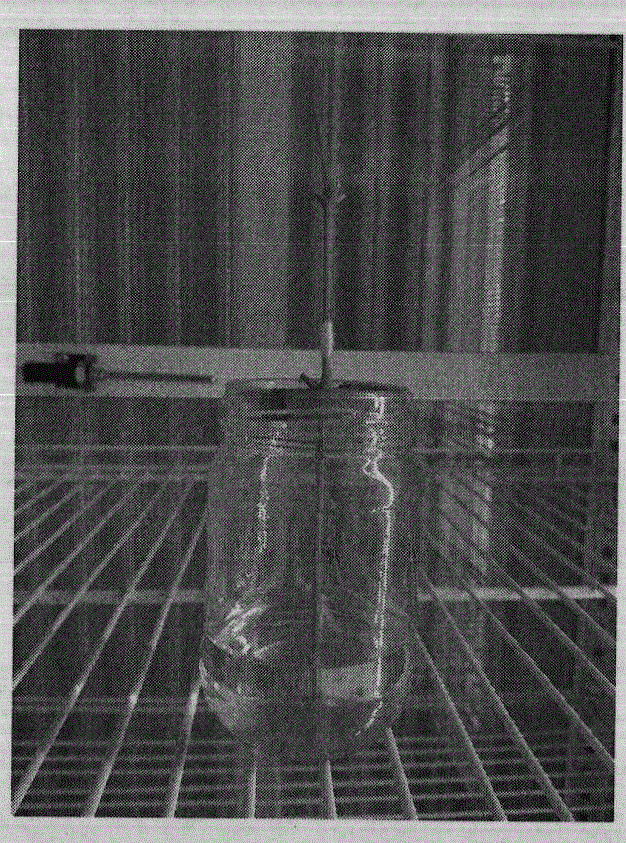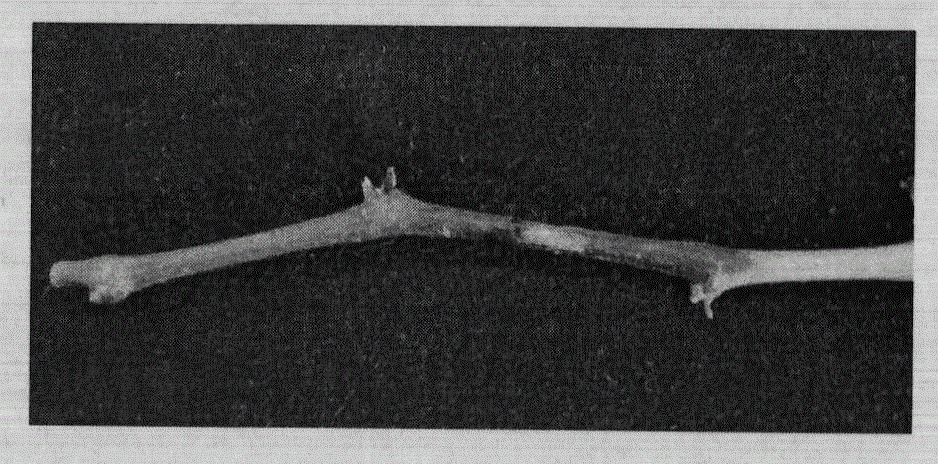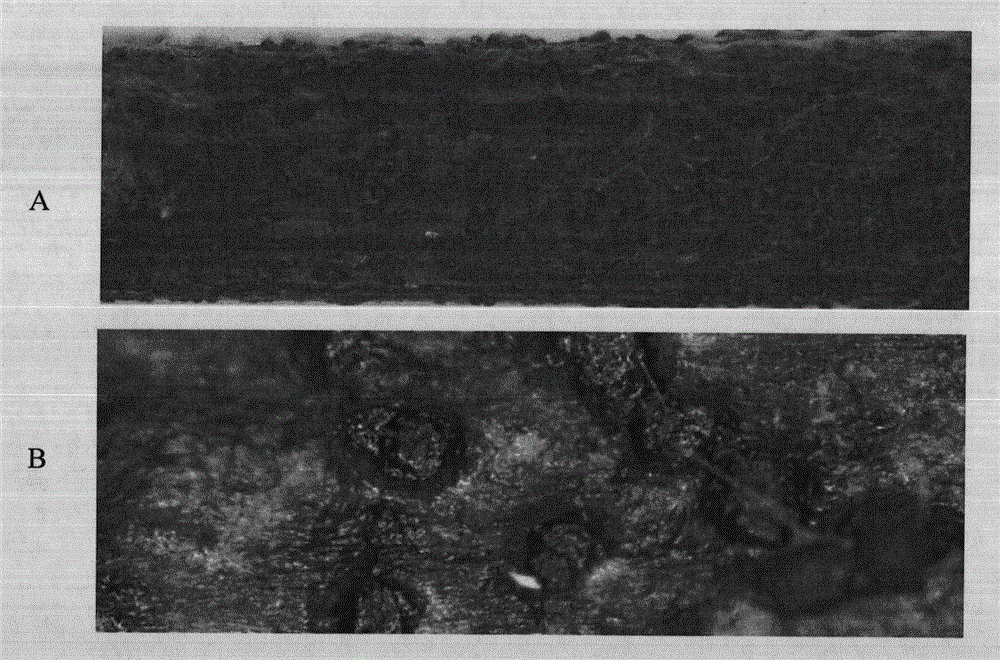Method for preparing conidia of lasiodiplodia theobromae
A technology of grape canker bacteria and conidia, applied in the direction of using spores, biochemical equipment and methods, microorganisms, etc., can solve the problem of pathogenicity degradation, decreased sporulation of Lasiodiplodiatheobromae strains, pathogenicity determination, pathogenicity Mechanism research difficulties and other problems, to achieve strong pathogenicity, solve the effect of reduced sporulation production and small difference in spores
- Summary
- Abstract
- Description
- Claims
- Application Information
AI Technical Summary
Problems solved by technology
Method used
Image
Examples
Embodiment 1
[0031] Embodiment 1, grape green branch screening
[0032] The present invention screens out grape varieties that are sensitive to grape canker and are suitable for producing conidia through a screening test, and experiments prove that the summer black grape is the most preferred grape variety. The specific tests are as follows:
[0033] (1) Activate the preserved grape canker sore bacteria strain (Lasiodiplodia theobromae) GX-5-5A on a 9cm PDA medium plate, and cultivate it for 3 days at 28°C, in an incubator with 12h light / 12h darkness, until the colony grows to Standby when 7cm.
[0034] (2) Use a 5mm sterilized hole puncher to punch out the mycelium block along the edge of the colony with the colony cultivated in step (1).
[0035] (3) Select the green branches of grape varieties such as queen bee, giant rose, and summer black shown in Table 1, cut into 30cm and include 2-3 sections of branches, and use 1% sodium hypochlorite surface disinfection for 1min with a mass per...
Embodiment 2
[0040] Example 2 Grape green branches induce spore production of canker sores
[0041] (1) Activate the preserved grape canker sore bacteria strain (Lasiodiplodia theobromae) GX-5-5A on a 9cm PDA medium plate, and cultivate it for 3 days at 28°C, in an incubator with 12h light / 12h darkness, until the colony grows to Standby when 7cm.
[0042] (2) Use a 5mm sterilized hole puncher to punch out the mycelium block along the edge of the colony with the colony cultivated in step (1).
[0043] (3) Select healthy summer black grape green branches and cut them into 30cm branches including 2-3 nodes, disinfect the surface with 1% sodium hypochlorite for 1min, then rinse 3 times with sterile water, and put them on the sterilized Dry on filter paper.
[0044] (4) Use a 5mm hole puncher to punch holes in the middle of the dried green branches to remove the phloem. The prepared mycelium block in step 2 is inoculated at the perforated place, wraps the mycelium block with a sealing film (...
Embodiment 3
[0046] Example 3 Preparation of spore suspension
[0047] (1) Cut the grape branch covered with small black spots among the embodiment 1 into 0.5cm×0.5cm size with blade, put into the 2mL eppendorf centrifuge tube that 1.5ml sterile water is housed.
[0048] (2) Grind the branches with a grinding gun for 1 min, and then vibrate on a shaker for 1 min to rupture the conidia and release spores.
[0049] (3) Filter with sterilized 2 layers of degreasing gauze to remove branch residues and hyphae, and the filtrate is the spore suspension of grape canker.
[0050] (4) After shaking the spore suspension evenly, pipette 100 μL and drop it on a Neubauer hemocytometer, cover with a cover glass, and calculate the concentration of the spore suspension under a microscope.
PUM
| Property | Measurement | Unit |
|---|---|---|
| diameter | aaaaa | aaaaa |
Abstract
Description
Claims
Application Information
 Login to View More
Login to View More - R&D
- Intellectual Property
- Life Sciences
- Materials
- Tech Scout
- Unparalleled Data Quality
- Higher Quality Content
- 60% Fewer Hallucinations
Browse by: Latest US Patents, China's latest patents, Technical Efficacy Thesaurus, Application Domain, Technology Topic, Popular Technical Reports.
© 2025 PatSnap. All rights reserved.Legal|Privacy policy|Modern Slavery Act Transparency Statement|Sitemap|About US| Contact US: help@patsnap.com



